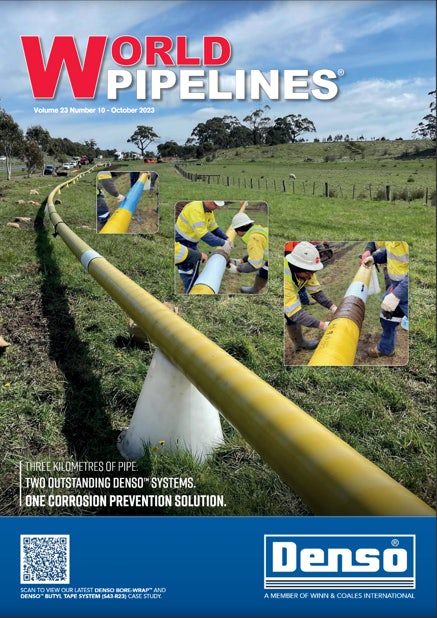Unlocking hidden insights: AI techniques for pipelines
AI is everywhere. We’ve published many blog articles on the topic, and we are investigating many potential AI techniques to improve the operational efficiency of pipeline operations.
Beyond the evident ability to optimise operational performance with pumps and compressors, AI unlocks numerous opportunities across various domains to elevate overall operational efficiency. We explore a few in this article which is part of a larger piece published in the October 2023 edition of World Pipelines Magazine – “Green and Lean: Data Driven Asset Optimisation for Transmission Pipelines”.
The following is an edited extract, outlining a selection of AI techniques and how we see them benefiting pipeline operators. If you’re interested in the whole article, scroll to the bottom of the page to get your own copy.

World Pipelines, October 2023
Optimisation roadmap
One task where we see AI excelling is automating the conversion of physical pipeline networks (diagrams, P&IDs, etc.) into mathematical models and/or code. While a necessary step for more complex system-wide analysis and digital twinning, it’s a laborious, error-prone, and manual process where AI could save significant time and resource.
Virtual instrumentation
Another tangential area is the creation of so-called ‘virtual instrumentation’ (VI), in which data sources required for analysis are simulated because they are physically lacking. This is done using data from nearby/hydraulically linked sensors and a good understanding of physics/fluid dynamics. AI has already been demonstrated as capable of replicating and sometimes surpassing the hand-crafted VI models.
Energy forecasting
One area where AI outshines traditional methods is in predicting energy prices, a crucial component of operational costing. If a pipeline is flexible over when it moves product, then why not do so when energy is cheapest? Analytical methods to predict energy prices struggle to incorporate the huge variety of contributing factors and must often rely upon a few crude inputs. In contrast, AI can infer future prices from past trends, processing a far greater volume of data inputs (e.g., weather forecasts, commodity prices, and energy usage patterns) for more accurate forecasting. Although incredibly valuable, operators must be aware that AI models remain vulnerable to sudden, rare events like sanctions or natural disasters, which can invalidate the applicability of historical patterns.
Anomaly detection
Anomaly detection is another area where the combination of analytical and AI methods can benefit pipeline operations. Analytical methods are excellent for identifying major anomalies and serve as vital sanity checks over AI systems. However, AI really shines by learning the specific performance characteristics of each individual asset under various conditions. This enables rapid recognition of anomalies when historical trends do not continue as predicted and allows for performance forecasting and predictive maintenance. In this way, AI enables operators to optimise maintenance schedules and maximise operational efficiency, ultimately reducing downtime and minimising costly disruptions.
The future of AI and big data for pipeline operators
Looking into the future, AI and big data analytics will manifest in pipeline digital twins for the energy industry. The digital twins will consist of trained AI, safe-guarded and sanity checked by analytical models. A pipeline system model will no longer be a silent participant. Instead, it will converse with operators, highlighting its needs and alerting them to upcoming maintenance requirements and potential failures. Operators could discuss objectives with it and receive precise and calculated advice on how best to achieve them. This scenario may sound far-fetched today, but the rapid pace of development in AI and data science suggests that this dream may not be far from becoming reality. Continued research, investment, and collaboration between industry stakeholders, technology providers, and policymakers will be essential in reaching this point.
For immediate impact, operators can harness the power of AI and data analytics to optimise their pumps and compressors. Technologies such as Klarian’s offer transformative solutions to drive greater efficiency and sustainability within the industry.
If you’re interested in reading the entirety of our article as featured in World Pipelines, sign up below and we’ll send you your own copy directly into your inbox.
Further reading
- Intelligent pipelines: a harmony of AI and human analytics
- How system-level modelling can optimise pipeline pumps and compressors
- Beyond the buzzwords: AI and data analytics in the pipeline industry
- Five ways AI and data analytics can transform the pipeline industry
- Unlocking hidden patterns: how AI and data science can optimise pipeline pump and compressor efficiency